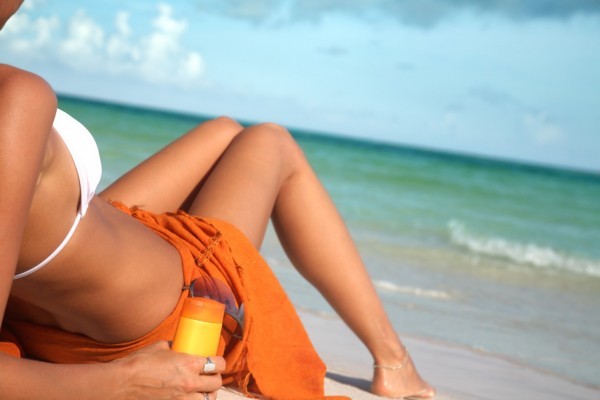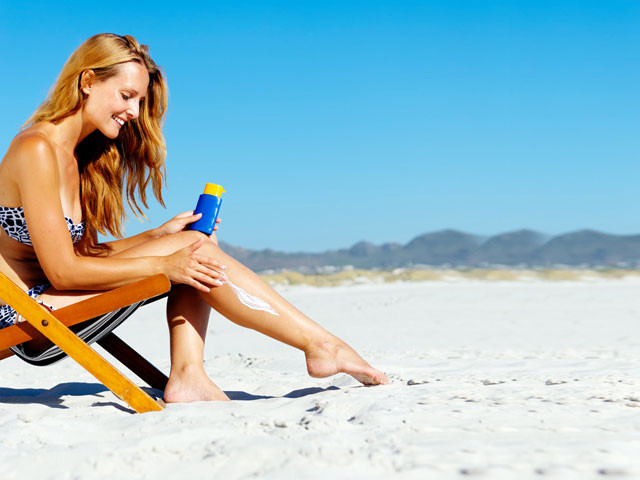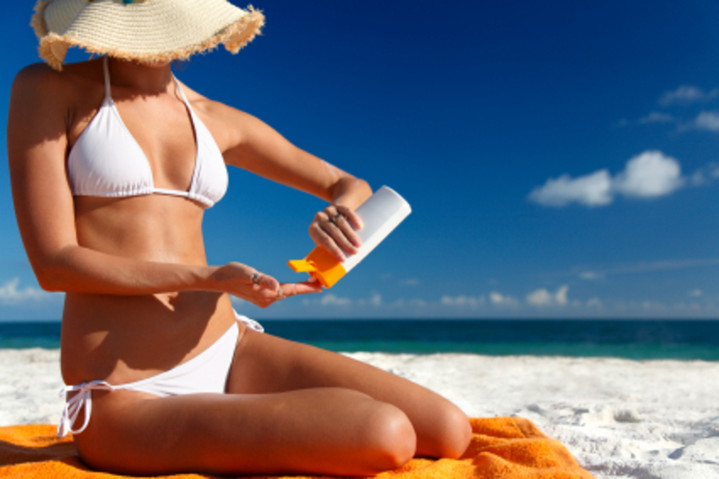Going on vacation? Learn how to tan, and not burn in the sun!
- CHOOSING A MEANS OF PROTECTION AGAINST THE SUN
- DEGREE OF PROTECTION
- STABILITY
- CONSTITUTION
- RULES OF DRAWING SUN-PROTECTIVE MEANS
- WE PROTECT THE SKIN FROM WITHIN
- HOW NOT TO BURN IN THE SUN: TIPS
The sun gives us fun and good mood thanks to the stimulation of the body's production of serotonin, the hormone of happiness. The sun's rays, the main natural source of vitamin D. And finally, the sun gives us the most beautiful tan. But at the same time, hard ultraviolet radiation is very aggressive effect on the skin. Therefore, the main "solar" rule - to protect from the sun. How? 
CHOOSING A MEANS OF PROTECTION AGAINST THE SUN
The main property of effective sunscreens - protection from two types of rays - A and B. Type A rays accelerate skin aging with the formation of free radicals and the destruction of collagen and elastin fibers, give a pigment. But their greatest threat is the increased risk of the formation of a malignant melanoma tumor, which triggers a system of damage to skin cells.
Type B rays are not so dangerous, but they also require effective protection - they are responsible for the sun's instantaneous hit on the surface of the skin, for its tan. Being unprotected from UV-B rays, you can simply burn.

Not all commercially available products are protected against both types of rays. Known to all SPF-filters protect the skin only from UV-B rays, that is, from sunburn. For example, there are sunscreens with a high level of SPF 50. But in one such protection there is no expediency - the manufacturer simply creates the illusion of its customer that it is completely protected from the sun. However, it does not protect against type A rays, and therefore there is a health risk.
Unified labeling filters to protect against UV-A rays yet. To choose the right cream or milk, look at the label - the following abbreviations will help you:
- SPF (Sun Protection Factor) - protects the skin from overheating and sunburn. It is also possible abbreviation UVB - UV protection type B.
- PPD (delayed secondary pigmentation). Today, the maximum level of PPD is 42. This means that during the period when the product is applied, the skin is protected from UVA rays by 42% more than without using the product. But not all companies use the PPD method.
- If there is no abbreviation PPD on the package with sunscreen, then you are looking for a UVA indicator (type A UV protection)
DEGREE OF PROTECTION
The degree of protection should be selected individually, focusing on your photo type - there are seven of them. The first phototype includes people with the lightest and sun-sensitive skin - often the skin is covered with freckles. The seventh phototype includes representatives of the Negroid race. In our strip, as a rule, there are owners of the first four photo types (3rd and 4th types are people with dark skin). It is better to entrust this question to a professional cosmetologist or a dermatologist - the doctor will select the degree of protection suitable for your skin. 
The largest degree of the currently existing SPF creams with an index of 50 and PPD is 42. Cosmetologists advise using such agents if you are the owner of fair skin and go out into the sun for the first time in a year.
To protect children's skin, buy either separate products with an indication “for children”, or means “for the whole family”, but with an obligatory note that it is also suitable for sensitive skin. The degree of SPF should be at least 15 for children. Generally, if we talk specifically about children's sunscreen cosmetics, then, with rare exceptions, it has only a high (from 15) and very high (25-40) SPF index.
STABILITY
No matter what remedy you choose with what level of protection, remember that its effectiveness lasts no more than 2 hours. After this time, the cream must be applied to the code again. If you are relaxing on the beach, then the prerequisite of the remedy is water resistance. It will not be washed away in water, and in fact it is precisely at the surface of the water that the rays are reflected from it, especially burning ones.
CONSTITUTION
It is of particular importance that you use - cream, oil, fluid, spray or lotion - no. Consider the features of your skin. So, for example, thick, viscous creams are more suitable for dry skin, and for oily skin - light milk, which is quickly applied to the body.
RULES OF DRAWING SUN-PROTECTIVE MEANS
Before you start using this or that tool, read the instructions. For example, many creams and oils begin to act only 15 minutes after application, so you should not run out into the sun immediately after smearing them. Do not forget to reapply every 2 hours - its effectiveness is not durable.
After bathing, take a shower to wash off the salt (if it is the sea), dirt (alas, it is present in one or another quantity in our freshwater bodies) and the remains of sunscreen. Then wipe dry - the remaining water droplets increase the effect of the sun and can cause a burn. And then, if you continue to sunbathe, apply the product again.
WE PROTECT THE SKIN FROM WITHIN
The skin needs comprehensive sun protection, so applying cream and lotion with filters alone is not enough. Be sure to saturate the body with moisture - drink at least 2 liters of clean water per day, and also pamper the skin with vitamins it needs - A, C, E, PP. 
Vitamin A is found in cookies, dried apricots, spinach, sweet peppers and apricots. Vitamin C is found in black currants, citrus fruits, cranberries, greens. Vitamin E is found in vegetable oils, nuts, sunflower seeds, beets. Vitamin PP (nicotinic acid) is found in milk, meat, buckwheat and legumes.
HOW NOT TO BURN IN THE SUN: TIPS
1) A month before the beginning of the solar season, all cosmetic procedures on the skin should be completed - all types of peelings, any rejuvenation procedures. After the sessions in the cosmetologist’s office for some time, the skin is very vulnerable and is especially susceptible to external irritations. A month is just enough for the skin to regain its protective functions and prepare for sunbathing. 
2) Use waterproof cosmetics - it will not “melt” on the face under the hot sun and will not flow in the pond. However, remember that waterproof lipsticks, foundation creams and mascara are highly allergic, so test products on a small area of skin before applying. Apply waterproof cosmetics need only to clean dry skin, otherwise the entire "indelible" effect will disappear due to fat.
And finally, do not use such tools daily - it is better to save them for the closest meetings with the sun. The fact is that waterproof cosmetics do not allow the skin to breathe normally, as it covers it with a dense indelible layer. And besides, it can dry the skin.
A source
How?